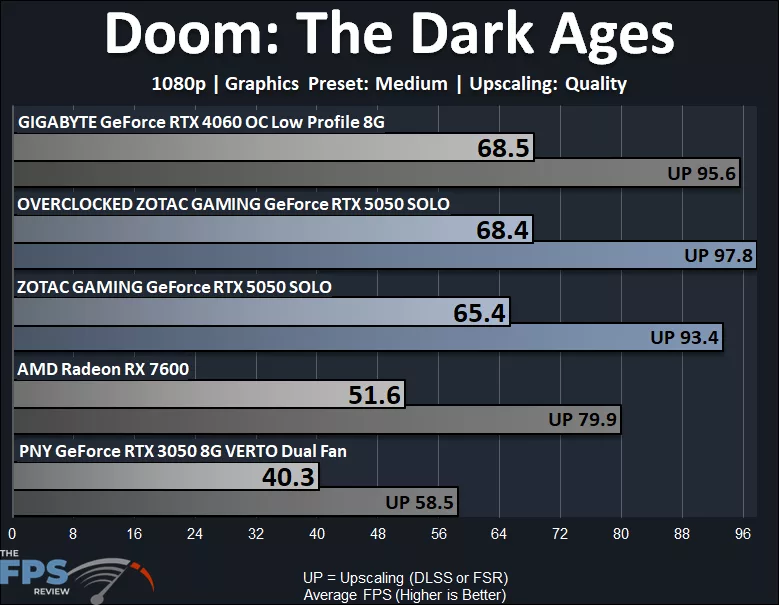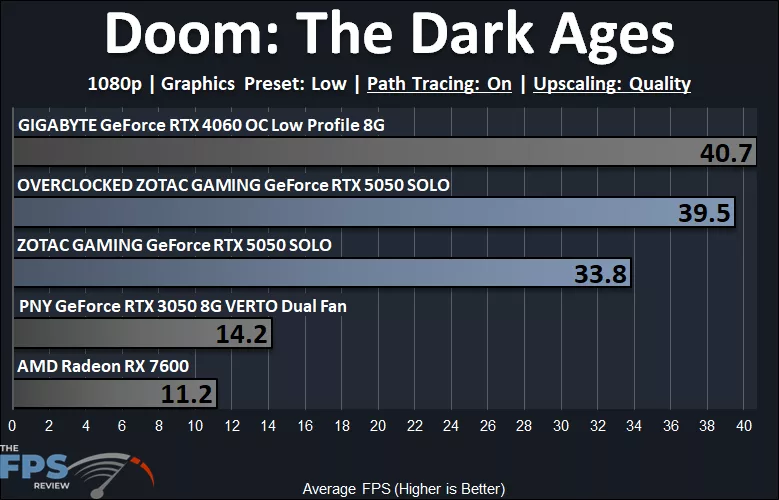Doom: The Dark Ages
Doom: The Dark Ages was released to PC in May of 2025 and uses the id Tech 8 game engine. This game features advanced graphics technologies, including path tracing, realistic lighting, reflections, and soft shadows. It has fully ray-marched volumetric effects with dynamic lighting and improved particle effects. It has detailed destructible environments, realistic water, and upscaling technologies such as DLSS 4. This is another one of those games that has ‘ray tracing’ enabled at all times, by default. You can optionally enable Path Tracing on top of it. We are going to utilize the game’s built-in benchmark level: Reckoning, but we will utilize Frameview to capture 1% Lows.
Native Resolution

Doom: The Dark Ages can be a very demanding game, and for this one, you really want fast framerates. In order to get above 60FPS average at native resolution 1080p, we had to drop to “Medium” game graphics preset. At “Medium”, the ZOTAC GAMING GeForce RTX 5050 SOLO is capable of giving us 65FPS average at native resolution, or 90FPS with DLSS Upscaling at Quality. The ZOTAC GAMING GeForce RTX 5050 SOLO is 62% faster than the GeForce RTX 3050, offering a better gameplay experience. The ZOTAC GAMING GeForce RTX 5050 SOLO was also 27% faster than the Radeon RX 7600. However, the ZOTAC GAMING GeForce RTX 5050 SOLO was 5% slower than the GeForce RTX 4060. Overclocking added only 5% to performance.
Path Tracing w/ DLSS Upscaling

Not that we expected Path Tracing to be playable, but we did want to test it for scientific reasons. Running the “Low” graphics preset, and Path Tracing turned on, the ZOTAC GAMING GeForce RTX 5050 SOLO is not playable even with DLSS Upscaling Quality. Performance-wise, the ZOTAC GAMING GeForce RTX 5050 SOLO is 138% faster than the GeForce RTX 3050, showing that from a technical perspective, the Path Tracing performance on the RTX 5050 is greatly improved compared to the RTX 3050. The ZOTAC GAMING GeForce RTX 5050 SOLO is 17% slower than the GeForce RTX 4060.
